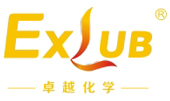



For decades, welding has been the preferred joining technology, but today, with its unique advantages, adhesives have emerged as a powerful alternative. Both soldering and adhesives are proven joining technologies that have been used for a long time. With components in the industrial sector often lasting 20 to 30 years, connection reliability is particularly important to consumers. They therefore prefer well-proven solutions with minimal risk.
Advantages of structural adhesives
High bond strength: Excellent bond strength is one of the highlights of structural adhesives. These adhesives are able to form stronger connections than welded parts, which is especially important in industries such as automotive and aerospace where safety and reliability are paramount. When you need to ensure that parts remain firmly connected under stress, Lloyd's adhesives are the ideal choice.
Design flexibility: Welding is often used to join similar materials, which can limit design options. In contrast, adhesives are able to bond different substrates, opening up more possibilities for innovative designs using lightweight materials. This design flexibility not only helps to improve the appearance of the product, but also reduces the total weight of the product, which is certainly a huge advantage for industries focused on efficiency and performance.
Reduced Thermal Distortion: The welding process generates a great deal of heat, causing warping or distortion of the weld material. This problem is particularly acute in precision applications where the original shape needs to be maintained. Lloyd's adhesives cure at room temperature, eliminating the risk of thermal distortion and ensuring that the integrity of the part is maintained throughout the bonding process.
Effective stress distribution: Adhesives are able to distribute stress over a larger surface area than welded joints. This feature is particularly important in applications subjected to dynamic loads, as it effectively reduces the risk of localized failures that could jeopardize the entire assembly. By using Lloyd's adhesives, manufacturers are able to significantly increase the service life and reliability of their products.
Corrosion resistance: In industries such as automotive and marine, components are often exposed to water and a variety of environmental factors that can easily lead to corrosion at the joints. Structural adhesives provide an effective protective barrier against corrosion, ensuring that joints remain intact over time. This durability is a major advantage in harsh environmental conditions. In addition, structural adhesives are able to bond closely to metal surfaces, even galvanized surfaces, and the adhesive creates a strong bond without damaging the protective layer of galvanization. This also eliminates the health risks that can be associated with welding galvanized materials.
Reduced Labor Costs: A significant advantage of using structural adhesives in manufacturing is the effective reduction of labor costs. Skilled welders tend to earn the highest hourly wage of any production worker. When companies switch to structural adhesives, labor costs for each production operation are reduced accordingly.
Welding Challenges
Thermal Effects: As mentioned earlier, the heat generated during the welding process can cause the material to warp, requiring additional machining, adjustments, and surface treatments, and may even lead to outright scrap of the part. Given that precision is critical in many applications, this warpage issue is certainly a significant drawback, as even small distortions can have an adverse effect on the overall function of the product. In addition to warping problems caused by welding, tempering is also commonly found in the heat affected zone around the weld. Although the metal is joined by melting at the joint, this area tends to be softer than the surrounding metal, especially in lightweight metals such as aluminum. In contrast, adhesives do not affect localized tempering of the metal during the joining process.
Limited material compatibility: Welding is usually limited to joining similar materials and is difficult to apply to different substrates. Adhesives are capable of bonding a variety of different types of materials, providing greater design flexibility and possibilities.
Skill requirements: Welding requires not only skilled workers, but also specialized training, which increases labor costs in the production process. Adhesive application is a much simpler process and requires less specialized training, allowing team members to easily participate in the assembly process.
Post-Weld Processing: After the weld is completed, a number of additional processes are often required to ensure the integrity and appearance of the weld. These may include grinding the weld to remove burrs, polishing to improve surface finish, or applying an anti-corrosion coating to prevent corrosion. These steps not only extend lead times, but also increase production costs. Adhesives typically require minimal follow-up, allowing for faster turnaround and a more efficient production process.
Inspection and quality control: Quality assurance of welded joints is a challenging task. Defects such as cracks, incomplete penetration or porosity can occur during the welding process, which may not be immediately apparent but can seriously affect the strength of the joint. To assess the quality of the weld, non-destructive inspection methods such as ultrasonic testing and radiography may be required, which are not only complex but also costly. While adhesives also need to be checked for quality, this can usually be done by visual inspection and the test methods are relatively simple.
Email to this supplier
2025-01-09